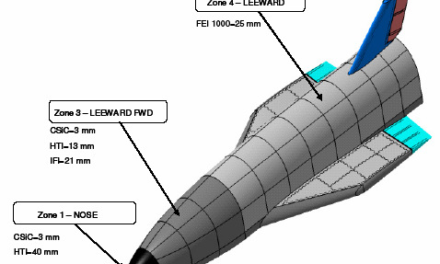Recent advancements in Sustainable Aviation Fuels (SAF) focus on improving production methods, feedstock diversity, scalability, and reducing lifecycle carbon emissions. SAF is a crucial component of the aviation industry’s efforts to achieve net-zero emissions by 2050.
1. Advanced Feedstocks
- Development:
- New feedstocks are being explored to expand SAF production beyond traditional sources like used cooking oil and agricultural waste.
- Examples:
- Lignocellulosic Biomass: Non-edible plant materials such as forestry residues and crop waste.
- Algae-Based Fuels: High oil-yielding microalgae grown on non-arable land or in wastewater.
- Municipal Solid Waste (MSW): Waste-to-fuel technologies convert landfill waste into SAF.
- Benefits:
- Reduces competition with food crops.
- Expands SAF production potential.
2. Power-to-Liquid (PtL) Fuels
- Development:
- PtL fuels, also called e-fuels, use renewable electricity, carbon dioxide (CO₂), and water to synthesize liquid hydrocarbons.
- Examples:
- Direct air capture (DAC) technology captures atmospheric CO₂ for SAF production.
- Benefits:
- Carbon-neutral production process.
- Scalability with renewable energy availability.
3. Hydrogen-Derived SAF
- Development:
- SAF production using hydrogen derived from renewable energy sources like wind, solar, or hydropower.
- Examples:
- Fischer-Tropsch process using green hydrogen and CO₂.
- Benefits:
- Significant reduction in greenhouse gas (GHG) emissions.
- High energy density suitable for long-haul flights.
4. Waste-to-Fuel Innovations
- Development:
- Advanced conversion technologies, such as pyrolysis and gasification, convert waste plastics, MSW, and industrial by-products into SAF.
- Examples:
- Plastic waste-to-SAF projects developed by LanzaTech and other innovators.
- Benefits:
- Tackles waste management challenges while producing clean fuel.
5. Improved Production Pathways
- Hydroprocessed Esters and Fatty Acids (HEFA):
- Dominates current SAF production due to established processes and scalability.
- Alcohol-to-Jet (ATJ):
- Converts ethanol, butanol, or other alcohols into SAF.
- Synthetic Iso-Paraffins (SIP):
- Produces SAF using sugars and bioengineered microorganisms.
- Benefits:
- Diversifies SAF pathways to reduce dependency on limited feedstocks.
6. Enhanced Blending Ratios
- Development:
- SAF can currently be blended with conventional jet fuel at up to 50%, but ongoing research aims to increase this ratio.
- Examples:
- Testing 100% SAF compatibility for engines and fuel systems, led by Boeing and Airbus.
- Benefits:
- Maximizes the carbon reduction potential of SAF.
7. Policy Support and Certification
- Development:
- Governments and international organizations are introducing policies and incentives to boost SAF adoption.
- Examples:
- Tax credits in the U.S. through the Inflation Reduction Act (IRA).
- European Union’s ReFuelEU Aviation initiative mandates increased SAF use by airlines.
- Certification of new SAF pathways by ASTM International.
- Benefits:
- Encourages investment in SAF infrastructure and production capacity.
8. Energy Efficiency in SAF Production
- Development:
- Researchers are improving catalysts and refining processes to reduce energy consumption in SAF production.
- Examples:
- Catalytic conversion technologies that reduce the cost and energy intensity of fuel synthesis.
- Benefits:
- Lowers production costs, making SAF more competitive with traditional jet fuel.
9. Industry Collaboration
- Development:
- Airlines, fuel producers, and technology companies are partnering to scale SAF production and distribution.
- Examples:
- United Airlines’ investment in SAF startups like Fulcrum BioEnergy.
- Boeing and Airbus SAF testing programs for next-generation aircraft.
- Benefits:
- Accelerates SAF adoption and improves supply chain efficiency.
10. Global SAF Production Scaling
- Development:
- New SAF production facilities are being built worldwide to meet growing demand.
- Examples:
- World Energy’s SAF refinery expansion in the U.S.
- Neste’s production facilities in Europe and Asia.
- Benefits:
- Increases availability, reducing costs and enhancing adoption.
Key Benefits of Latest SAF Advancements
- Reduced Lifecycle Carbon Emissions:
- Up to 80% reduction compared to traditional jet fuel.
- Sustainability:
- Avoids deforestation and food vs. fuel conflicts by utilizing waste and non-edible resources.
- Scalability:
- Innovations in feedstocks and production pathways expand global SAF potential.
- Compatibility:
- Drop-in fuels work seamlessly with existing aircraft and infrastructure.
Challenges and Outlook
- Challenges:
- High production costs and limited availability remain barriers.
- Complex certification processes for new SAF pathways.
- Outlook:
- With supportive policies, technological advancements, and industry collaboration, SAF adoption is expected to grow significantly, playing a key role in decarbonizing aviation.
Conclusion
The latest advancements in SAF production, feedstocks, and policies are driving the aviation industry’s transition toward sustainability. With continued innovation, SAF is poised to be a cornerstone of a greener future for aviation.
Hashtags
#SustainableAviationFuels #SAFInnovation #GreenAviationFuel #NextGenAviationFuels #EcoFriendlyFlightFuel #AdvancedSAFTech #SAFResearchAndDevelopment #BiofuelsForAviation #SyntheticAviationFuels #CarbonNeutralFuels #NetZeroAviation #CarbonNeutralFlights #SustainableAviationTech #GreenFlightInnovation #EcoSustainableTravel













